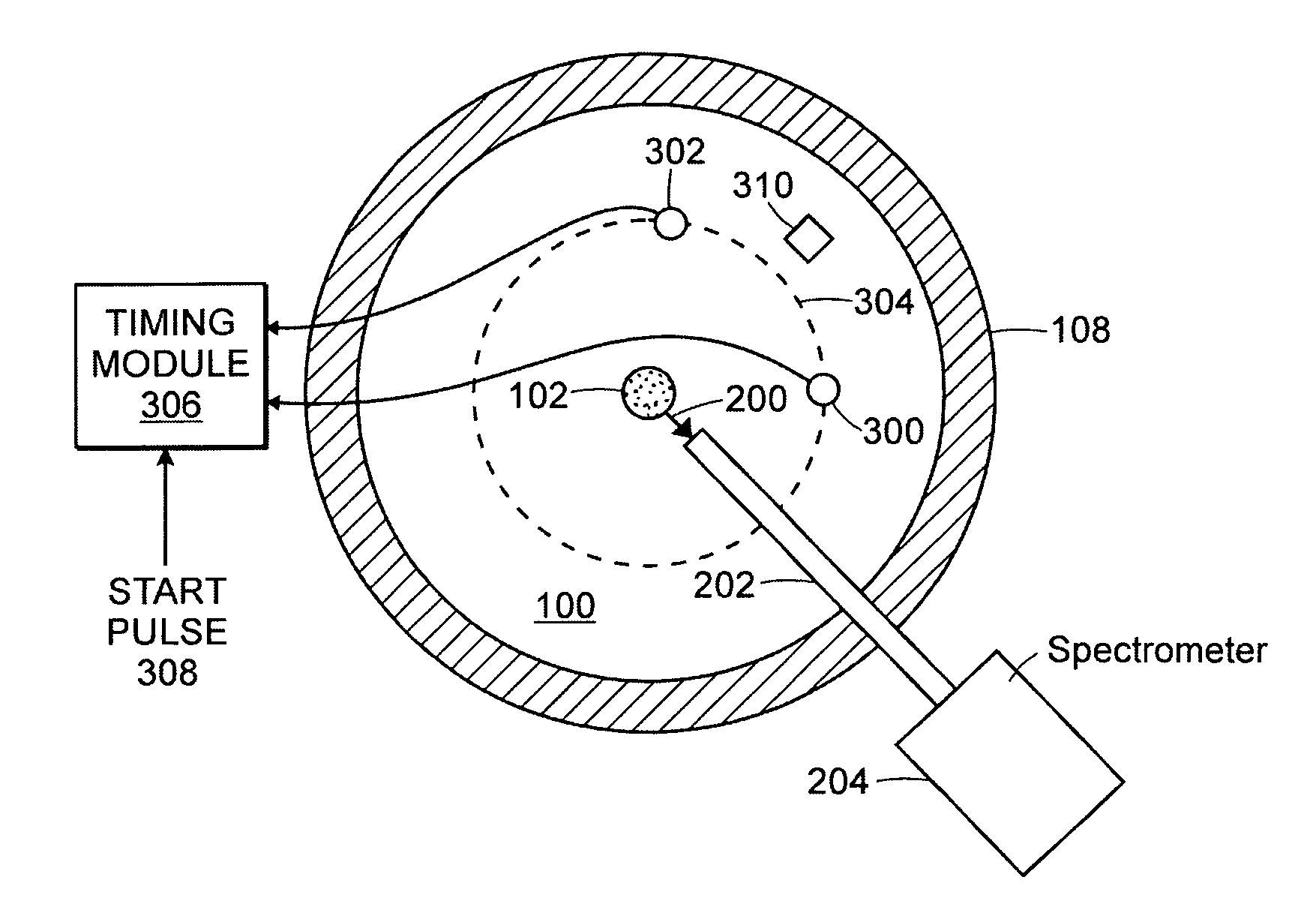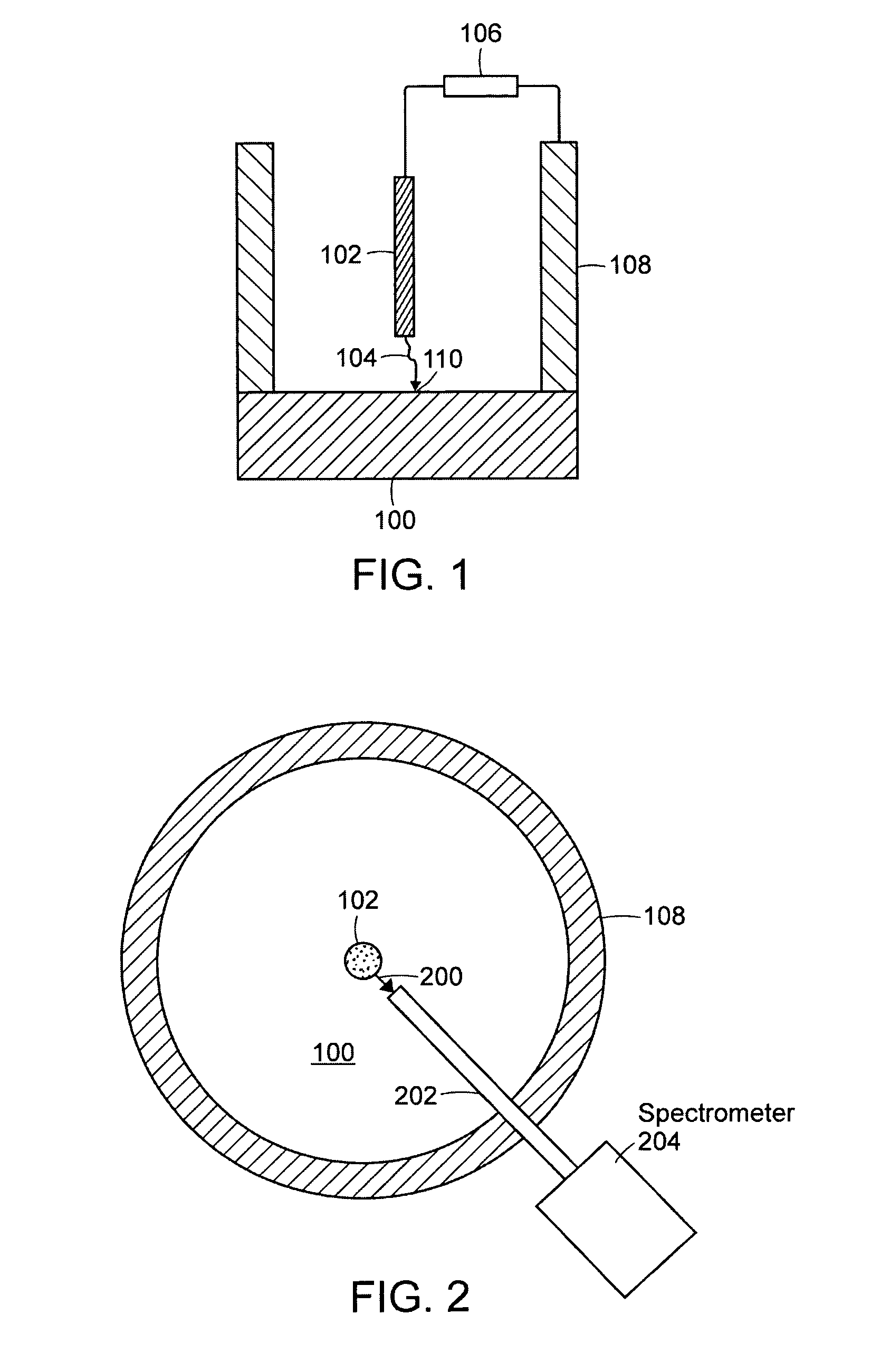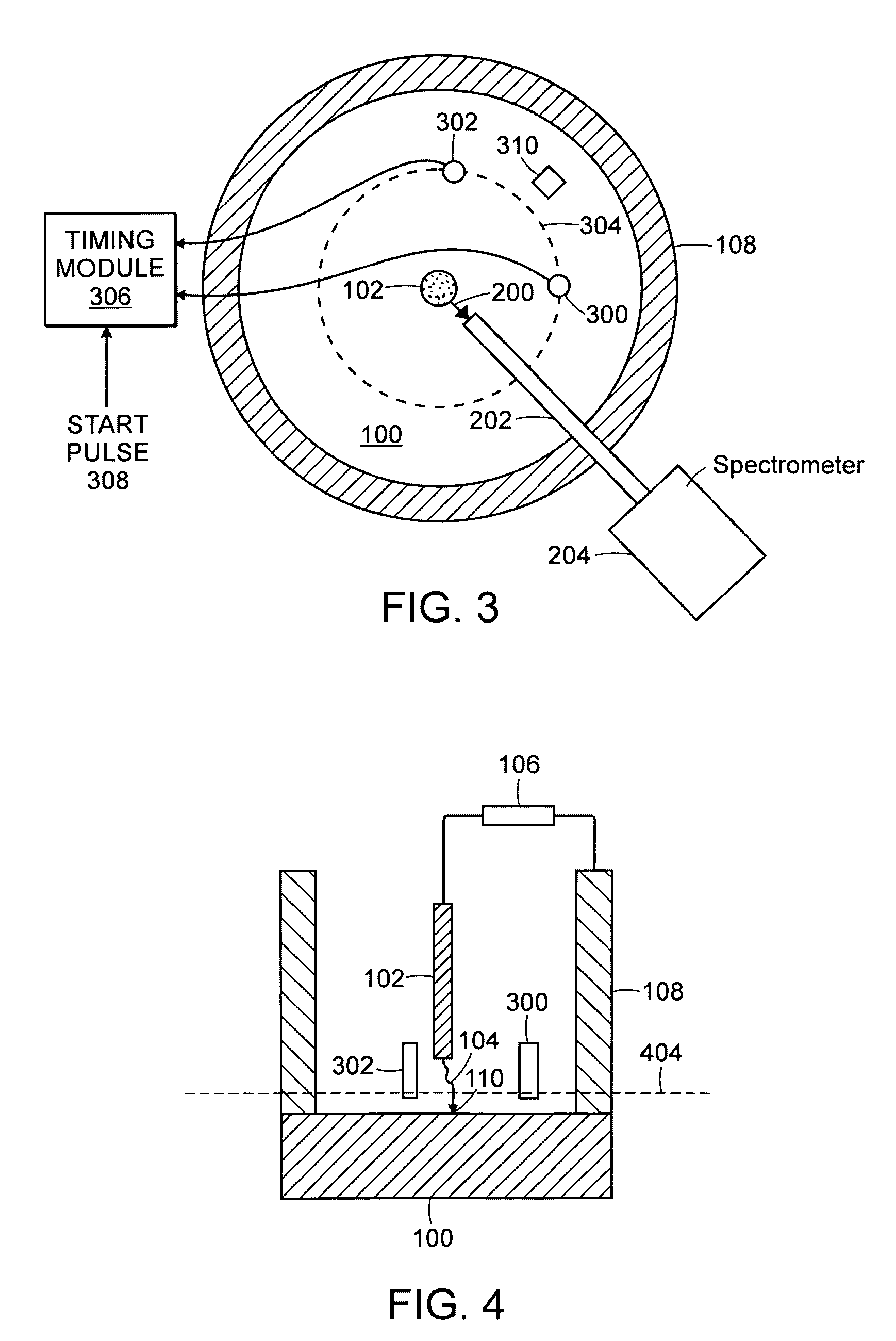Arc/spark optical emission spectroscopy correlated with spark location
a technology of optical emission and correlation, applied in the field of optical emission spectroscopy, can solve the problems of no method for determining, blackening of strike points, and inability to correlate the position of individual sparks with the elemental composition of materials,
- Summary
- Abstract
- Description
- Claims
- Application Information
AI Technical Summary
Benefits of technology
Problems solved by technology
Method used
Image
Examples
Embodiment Construction
[0040]Embodiments of the present invention include methods and systems for determining where an individual spark strikes a sample in an OES arc / spark apparatus. Other embodiments of the present invention include methods and systems for correlating the position of an individual spark with the elemental composition of the material excited by the spark. The methods and systems described herein can determine the spatial distribution of elemental composition with great spatial resolution, such as within microns. Devices, according to the present disclosure, for making spatially correlated elemental analysis can be added to present instrumentation.
[0041]Other embodiments of the present invention include methods and systems for determining a time at which a spectrum of interest is produced or which of a plurality of spectra is of interest.
[0042]Yet other embodiments of the present invention include methods and systems for correlating the position of an individual spark with the elemental c...
PUM
| Property | Measurement | Unit |
|---|---|---|
| sound speed | aaaaa | aaaaa |
| speed | aaaaa | aaaaa |
| radius | aaaaa | aaaaa |
Abstract
Description
Claims
Application Information
 Login to View More
Login to View More - R&D
- Intellectual Property
- Life Sciences
- Materials
- Tech Scout
- Unparalleled Data Quality
- Higher Quality Content
- 60% Fewer Hallucinations
Browse by: Latest US Patents, China's latest patents, Technical Efficacy Thesaurus, Application Domain, Technology Topic, Popular Technical Reports.
© 2025 PatSnap. All rights reserved.Legal|Privacy policy|Modern Slavery Act Transparency Statement|Sitemap|About US| Contact US: help@patsnap.com



